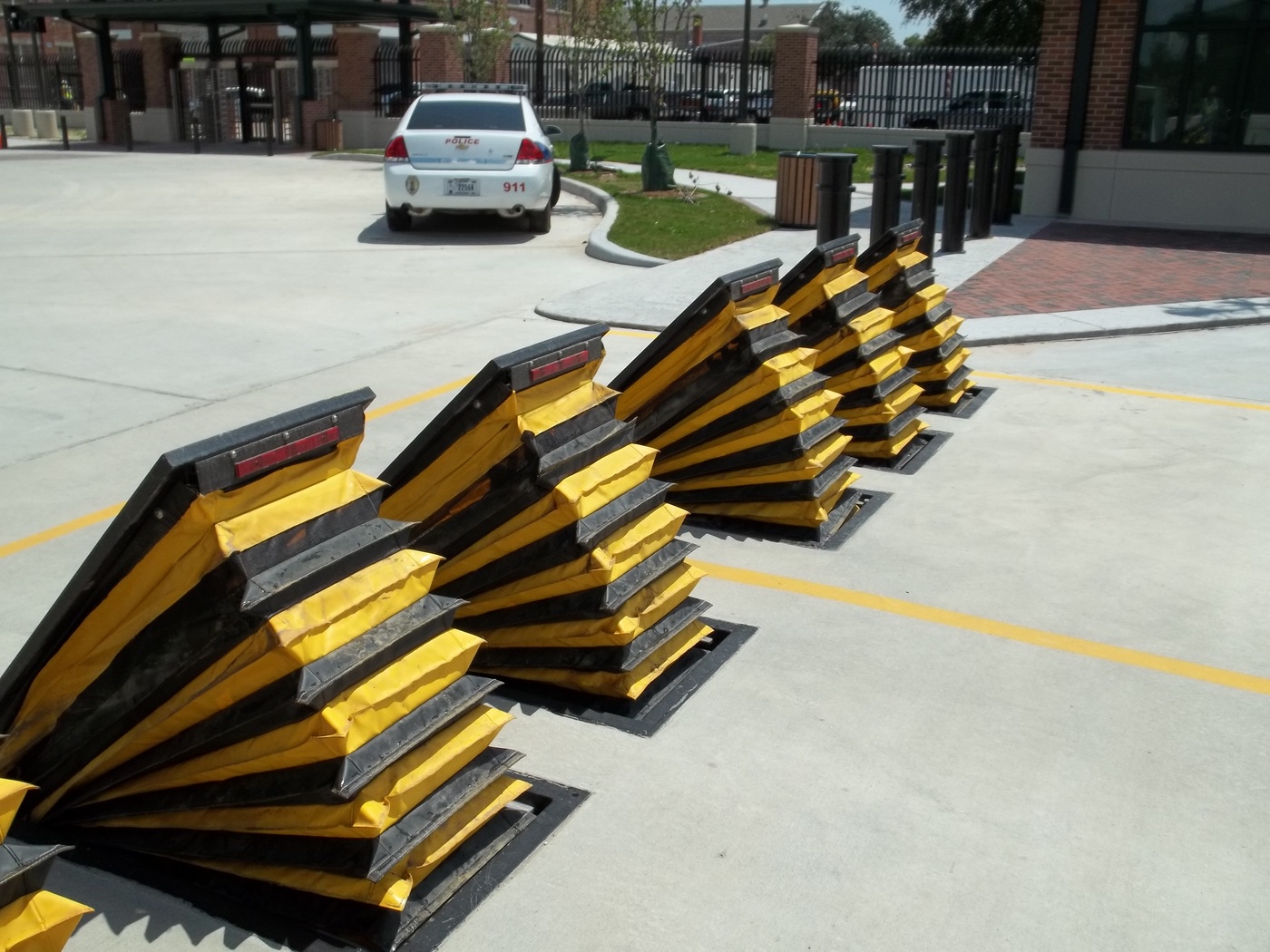The 9-Minute Rule for Wedge Barriers
Table of ContentsThe Ultimate Guide To Wedge BarriersWedge Barriers - Truths

14 and the surface area 12 to which the obstacle 10 is protected may be made from concrete - Wedge Barriers. 2, the barrier 10 is placed to or includes an anchor or subframe (e. g., anchor 30 received FIG. 2 )safeguarded underneath the surface area 12. For example, the bather 10 may be bolted to the anchor or safeguarded to the support by various other mechanical fasteners. In the detailed embodiment, the obstacle 10 includes a wedge plate 16, which includes a part that is substantially parallel with the surface area 12 when the obstacle 10 is in the withdrawed setting. To put it simply, cars or people may overlook the barrier 10 when the obstacle 10 remains in the retracted position and experience slight elevation relative to the surface 12 while on the barrier 10. As talked about thoroughly listed below, when the barrier 10 remains in the deployed setting, the wedge plate 16 is held and sustained in an increased placement by a lifting mechanism of the barrier 10. In addition, the components 18 might be bolted or otherwise mechanically coupled to each other. In this manner, repair or replacement of several components 18 might be simplified and streamlined. That is, repair or replacement of single components
18 might be done much more quickly, quickly, and price efficiently. FIG. In certain embodiments, the anchor 30 might be a steel structure consisting of plates, light beams(e. g., I-beams ), and/or various other frameworks that are safeguarded within the structure 14, which may be concrete. At the surface 12, a top side 28 of the anchor 30 might go to the very least partly subjected
, thereby allowing the add-on of the barrier 10 to the support 30. g., threaded holes)in several beams or plates of the anchor 30 may be subjected to the surface area 12. In this way, screws 32 or various other mechanical fasteners might be made use of to safeguard the obstacle 10 to the anchor 30. As the why not try here obstacle 10 is installed to the surface area 12 of the foundation 14, collection of debris and various other material below the obstacle may be reduced, and parts of the bather 10 might not blog here be subjected to below grade atmospheres. As suggested by reference character 52, the lifting system 50 includes parts got rid of underneath the wedge plate 16. As an example, the parts 52 under the wedge plate 16 may consist of an electromechanical actuator, a web cam, one or more camera surfaces, and so forth. Furthermore, the training system 50 includes a springtime setting up 54
The spring pole 58 is combined to a web cam(e. g., web cam 80 revealed in FIG. 4) of the training mechanism 50. The springtimes 60 disposed about the spring pole 58 are kept in compression by spring sustains 62, consisting of a dealt with springtime support 64. That is, the set spring support 64 is dealt with relative to the foundation 14 and the remainder of the bather 10.
About Wedge Barriers
g., springtime support 65 )might be repaired to completion of the springtime rod 58 to make it possible for compression of the springtimes 60. As the springs 60 are compressed between the spring sustains 62, the spring setting up 54 produces a force acting on the webcam paired to the springtime rod 58 in a direction 66. For instance, the staying pressure related to
the camera to deploy the wedge plate 16 might be given by an electromechanical actuator 84 continue reading this or other actuator. The springtime assembly 54 and the actuator 84(e. g., electromechanical actuator)may run together to translate the web cam and lift the wedge plate 16.
As stated above, in the released placement, the wedge plate 16 offers to obstruct accessibility or traveling past the obstacle 10. The barrier 10(e. g., the wedge plate 16 )might obstruct pedestrians or vehicles from accessing a home or pathway. If a car is traveling in the direction of the deployed wedge plate 16(e. For instance, in one circumstance, the security legs 86 may be prolonged throughoutmaintenance of the barrier 10.